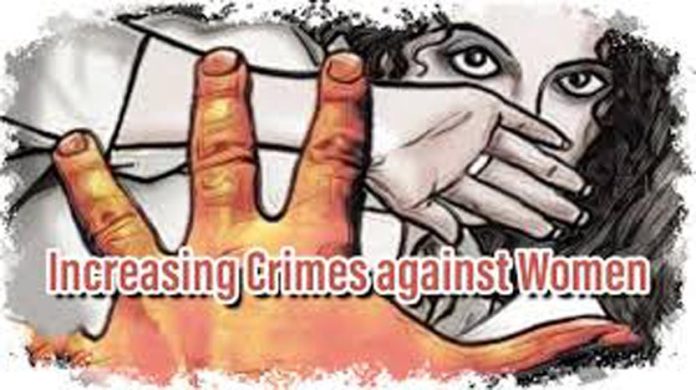Rahul Aggarwal
In recent years, India has witnessed a troubling rise in crimes against women. High-profile cases and a growing awareness of gender-based violence have spotlighted the severity and frequency of these offences. From sexual assault and domestic violence to harassment and trafficking, the spectrum of violence against women is distressingly broad. Though Article 14, 15, 19, and 21 & 21A of the Indian Constitution impose obligations to protect women’s rights, but the attitude of police and procedural laws adopted for the implementation of rules falls short to impart full protection to women.
The recent bone chilling case of gang rape and murder reported at RG Kar Medical College Kolkata, the case which is being referred to as Nirbhaya 2, has shook the consciousness of whole nation. The increasing cases of violence against women are a matter of big concern, but what is more concerning and disturbing at the same time is that the majority of crimes against women like rape, acid attacks, murders, dowry deaths are committed by their near and dear ones only. Despite numerous Laws and Acts to put a stop to all these violent acts against women, such as laws for the prevention of dowry, dowry-deaths, rapes, cruelty, etc., many crimes are not reported, and the accused are not punished.
India’s gender-based violence crisis is evident through various alarming statistics. According to the National Crime Records Bureau (NCRB) data, crimes against women have seen a disturbing increase. For instance, cases of rape and sexual assault have surged, with a significant number of these crimes remaining unreported due to social stigma, fear of retaliation, and lack of faith in the legal system. Additionally, domestic violence, harassment, and trafficking continue to plague the country, highlighting deep-seated issues within societal attitudes and law enforcement mechanisms.
India’s legal system has made strides in addressing violence against women, with several laws enacted to safeguard their rights and provide justice. However, the effectiveness of these laws often depends on their implementation and the systemic support provided to survivors.
The Criminal Law (Amendment) Act, 2013: Often referred to as the Nirbhaya Act, this legislation was introduced in response to the horrific gang rape and murder of a young woman in Delhi in December 2012. The Act brought significant changes to the Indian Penal Code, including stricter penalties for sexual offences, the introduction of new offences like stalking and voyeurism, and the enhancement of the legal definition of rape. It also mandated faster trials for sexual offences and improved support for victims.
The Protection of Human Rights Act, 1993: This Act established the National Human Rights Commission (NHRC) and State Human Rights Commissions (SHRCs), which play a crucial role in addressing human rights violations, including those related to gender-based violence. These commissions investigate complaints, recommend actions, and promote awareness about human rights.
The Domestic Violence Act, 2005: Officially known as the Protection of Women from Domestic Violence Act, this law aims to protect women from domestic abuse. It provides for a range of protections, including the right to reside in a shared household, protection orders, and the right to seek monetary relief. The Act also emphasises the need for support services such as shelter and counselling for survivors.
The Sexual Harassment of Women at Workplace (Prevention, Prohibition, and Redressal) Act, 2013: This law addresses sexual harassment in the workplace by mandating the establishment of Internal Complaints Committees (ICCs) in organisations. It outlines procedures for lodging complaints and conducting investigations, aiming to create a safer work environment for women.
The Trafficking of Persons (Prevention, Protection, and Rehabilitation) Act, 2018: This Act focuses on preventing trafficking, protecting survivors, and providing rehabilitation. It addresses both inter-state and international trafficking, setting up mechanisms for the care and rehabilitation of victims and ensuring that perpetrators face stringent penalties.
Despite these legislative measures, several challenges remain. Implementation and enforcement of laws are often inconsistent, with many survivors facing bureaucratic hurdles, lack of support, and societal pressure. The judicial process can be slow and cumbersome, leading to a lack of faith in the system. Moreover, there is a significant gap between legal provisions and their practical application, partly due to inadequate training of law enforcement personnel and a shortage of resources. Public awareness and societal attitudes also play a crucial role. Cultural norms and stereotypes often impede the reporting of crimes and the pursuit of justice. Effective legal reforms must be complemented by broader societal change, including education on gender equality and the promotion of a supportive environment for survivors.
Addressing the rising crimes against women in India requires a multi-faceted approach. Strengthening the legal framework is essential, but it must go hand-in-hand with improving law enforcement practices, enhancing the judicial process, and fostering societal change. Greater investment in victim support services, public awareness campaigns, and educational programs is crucial.
Empowering women, challenging discriminatory attitudes, and ensuring that legal protections are effectively implemented can pave the way for a safer and more just society. As India continues to grapple with these issues, a concerted effort from all sectors of society-government, civil society, and individuals-will be vital in creating a future where women’s rights are upheld and violence is no longer a pervasive threat.
(The writer is an Advocate)
Trending Now
E-Paper


